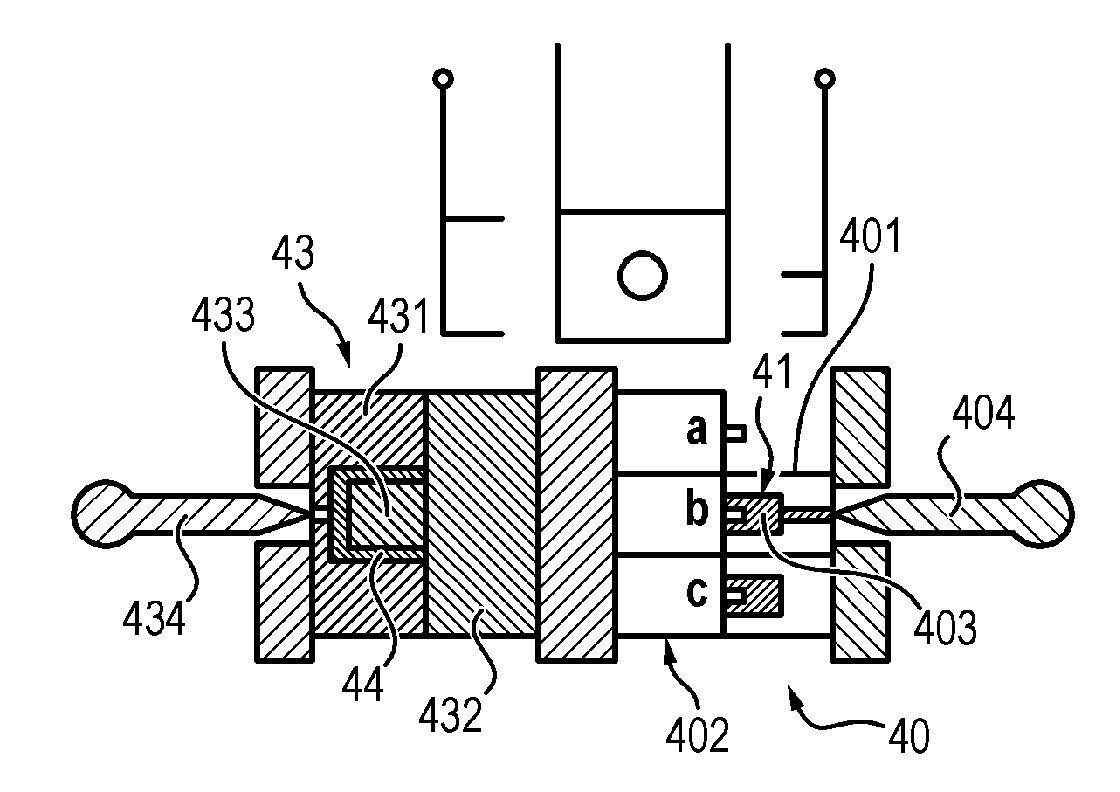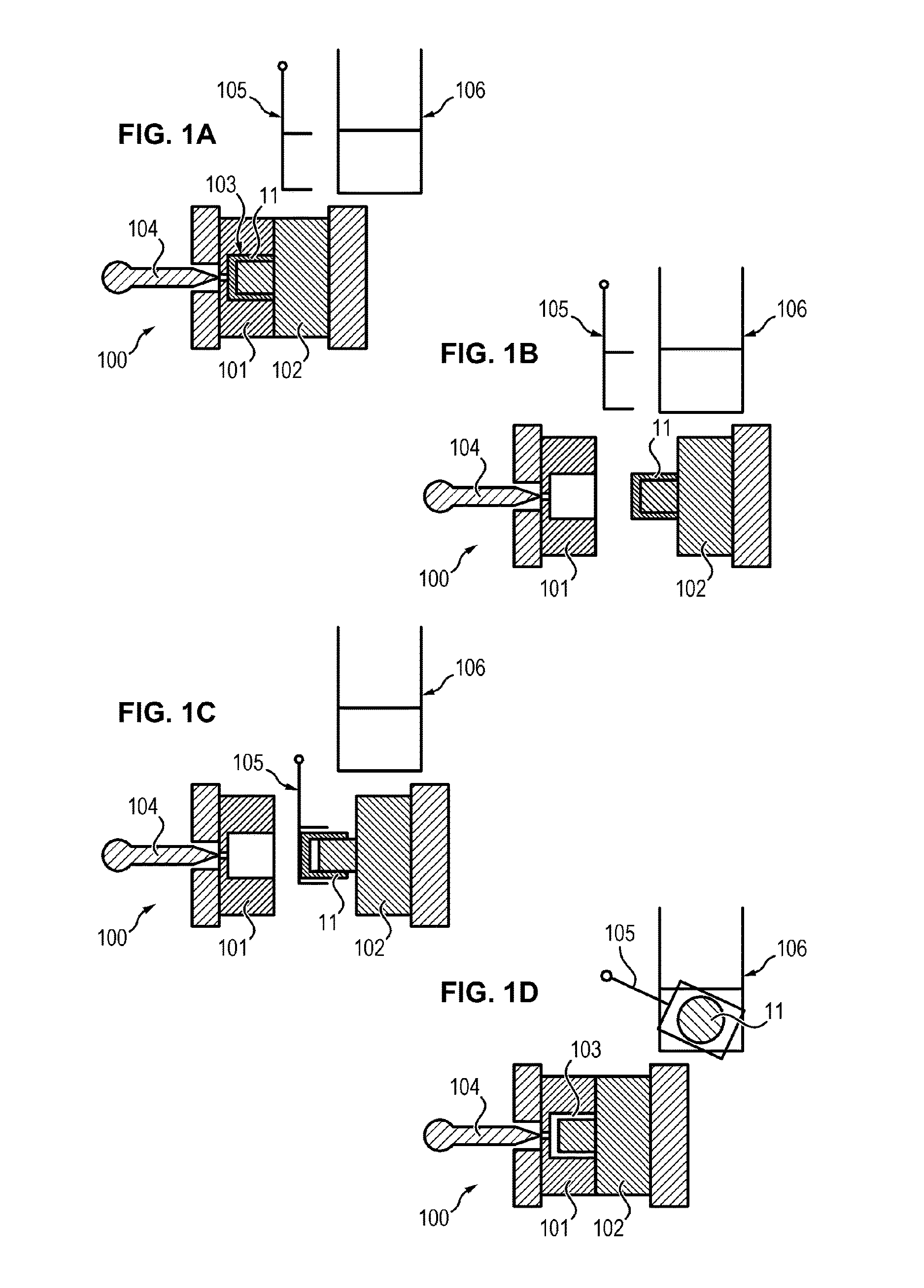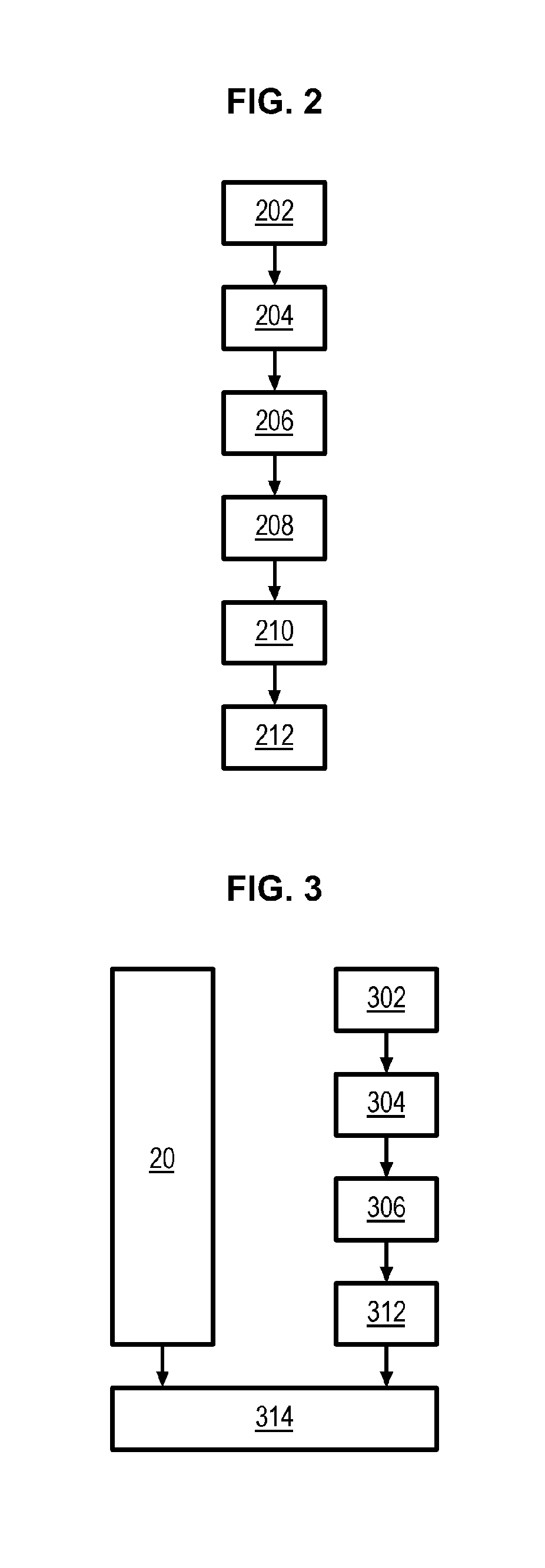Method for producing parts
a polymer and production method technology, applied in the field of polymer production methods, can solve the problems of increasing the relative unit cost of parts of this type, mixing between parts, and complicating the essential requirement of traceability of parts for pharmaceutical and medical use, and achieve the effect of limiting the bulk of the tooling needed for production and rapid production
- Summary
- Abstract
- Description
- Claims
- Application Information
AI Technical Summary
Benefits of technology
Problems solved by technology
Method used
Image
Examples
first example
[0175]FIGS. 4A1 to 4D2 illustrate an example of a method for producing a part formed of two elements.
[0176]The part is a protective sheath for needles routinely used in the pharmaceutical field, in particular for syringes pre-filled with medication and intended to be incorporated for example in drug auto-injectors.
[0177]The part is typically composed of two elements. The first element 41 is an element in elastomer for example typically of cylindrical shape comprising an inner conical part intended to receive the needle. The second element 44 is typically a tubular part in rigid plastic covering the first element 41 and intended to rigidify this same more flexible first element 41.
[0178]The two elements are typically produced in equal quantities since they are intended to be assembled together in strict parity.
[0179]The first element 41 typically forms an inner part in elastomer and may comprise thicker parts typically in the order of 2.5 mm. The second element 44 typically forms a r...
second example
[0190]FIGS. 5A1 to 5E2 illustrate another example of a method for producing a part formed of two elements.
[0191]The parts also form a needle protection for example.
[0192]This example differs from the preceding example in that the solidification time of the first element 41 is typically substantially equal to three times the solidification time of the second element 44 intended to be assembled in parity with the first element 41.
[0193]The second element 44 is typically produced on a second mould 43 having n injection cavities, “n” being a positive integer, the first element 41 then typically being produced on a mould 40 of which the second mould portion 402 comprises 3×n ejection zones 4021, 4022 and 4023.
[0194]The first element 41 and the second element 44 are produced for example on injection moulding machines.
[0195]The machines are typically associated in tandem during production time, the produced first elements 41 and second elements 44 typically being immediately assembled toge...
PUM
| Property | Measurement | Unit |
|---|---|---|
| thickness | aaaaa | aaaaa |
| thickness | aaaaa | aaaaa |
| thickness | aaaaa | aaaaa |
Abstract
Description
Claims
Application Information
 Login to View More
Login to View More - Generate Ideas
- Intellectual Property
- Life Sciences
- Materials
- Tech Scout
- Unparalleled Data Quality
- Higher Quality Content
- 60% Fewer Hallucinations
Browse by: Latest US Patents, China's latest patents, Technical Efficacy Thesaurus, Application Domain, Technology Topic, Popular Technical Reports.
© 2025 PatSnap. All rights reserved.Legal|Privacy policy|Modern Slavery Act Transparency Statement|Sitemap|About US| Contact US: help@patsnap.com



